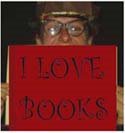
Namioka, Lensey. 2003. Half and half. New York: Delacourte Press. 0385730381.
Plot Summary
Fiona is a child of parents from two different races. Her grandparents come to visit during the Folk Festival and Fiona is forced to choose between her Scottish heritage and her Chinese heritage for which performance she will attend. Her love of dancing and her support of her father are at odds and eventually she learns how to satisfy everyone involved, including herself, while embracing both of her halves.
Critical Analysis
This book addresses a very common situation in this country today. Children of mixed races is extremely common and the identity crisis that they must feel during the teenage years when the struggle to fit in battles the struggle to stand out. Not all of the cultural heritages that make up each of us are always at odds however. Namioka’s story plays rather simply an issue of magnificent depth and complexity. Indeed, even more so at the age of Fiona’s character. Her analysis of the various conflicts seems very rosy, naive, uncomplicated and inappropriate for the age of her character.
The story creates several smaller conflicts all centered on the issue of who Fiona sees herself as, Scottish or Chinese. The grandparents pressure Fiona and her brother in choosing whom they identify with more and take offense to the loss when not chosen. They are characterized as simple, selfish, and outright cruel because of their demand for loyalty. This can hardly be realistic to such an extreme and seems like a fabrication to create false tension between themselves and conflict for Fiona.
The story begins when Fiona is forced to choose between Asian, White or Other for a class registration form. In the beginning of the story, she declares that she “can’t enroll in the dance class until I decide what my race is!” (p14) This is a plausible situation that would bring inner conflict in anyone and is too neatly tied at the end of the book with her succumbing to being an Other as a way out from having to “choose one culture over another”(p136). She succumbs to being this half-and-half person throughout the book with clever phrases like, “Normally I don’t mind looking Chinese. But now I was very conscious that I didn’t belong. I felt like a prune in a bowl of strawberries.” (p47) Aside from the unfortunare way this is phrased it is also an awkward metaphor. The situation is rather simplified and the author misses an opportunity to address this common situation in a more challenging way.
The Folk Festival that centers the book’s storyline is also a simplified black and white cultural celebration. The Scots wear traditional kilts, the Chinese wear traditional silk jackets. The Scottish dance is danced by children that look Scottish and this leaves Fiona to feel out of place because she looks more Asian than European. There are likely other dancers that are not pure Scottish heritage that may also look different than a traditional Scot but there is no mention of this and seems really unrealistic. The Chinese character’s that the father illustrates for his children’s books apparently follow the stereotypical Chinese girl’s characteristics and mannerisms (meek, walks with head down, small feet and hands, and others mentioned by the author) and leave Fiona feeling like she is not right to portray the characters for his presentation. However, the father’s character reads as being very open to embracing one’s individuality and likely does not draw characters that mimic stereotypes he himself does not believe, simply to please his Chinese mother. This is an example of another simplified conclusion to a rather important issue.
The author includes one other “half and half” or mixed race child in the story and she hardly struggles with the same racial identification. Her best friend is Japanese American and she serves only to be her friend more than someone Fiona relates to and coverses about this. There are other children that Fiona shares her lunch with that are the “Odds and Edds Box” table (p12). Apparently kids that are African American, Hispanic, Asian American and ‘all sorts of mixtures’ sit here while everyone else has a table of their own kind. Also, unlikely in today’s schools. Of course, schools have clicks of groups and similar “kinds” but this gives the impression that pure breds are the majority and this is extremely untrue. It clearly is described this way to show that Fiona is different and that the others that are also different are whom she feels kinship to. True enough, but simplified, unsmooth, and doesn’t seem to teach tolerance, open mindedness or any other lesson that this author was clearly trying so hard to do with this plot.
Review Excerpts
“A realistic, gentle and funny tale.”—Detroit News & Free Press
“Readers will identify with Fiona’s struggle to fit in.”—Publishers Weekly
http://www.randomhouse.com/catalog/display.pperl?isbn=9780440418900
Connections
Other mixed race children character based juvenile titles:
- Dorris, Michael. The Window. 1997. When ten-year-old Rayona's Native American mother enters a treatment facility, her estranged father, a Black man, finally introduces her to his side of the family, who are not at all what she expected.
- Garland, Sherry. Valley of the Moon: the diary of Maria Rosalia de Milagros. 2001. The 1845-1846 diary of thirteen-year-old Maria, servant to the wealthy Spanish family which took her in when her Indian mother died. Includes a historical note about the settlement and early history of California.
- Woodson, Jacqueline. The house you pass on the way. 1997. When fourteen-year-old Staggerlee, the daughter of a racially mixed marriage, spends a summer with her cousin Trout, she begins to question her sexuality to Trout and catches a glimpse of her possible future self.


No comments:
Post a Comment